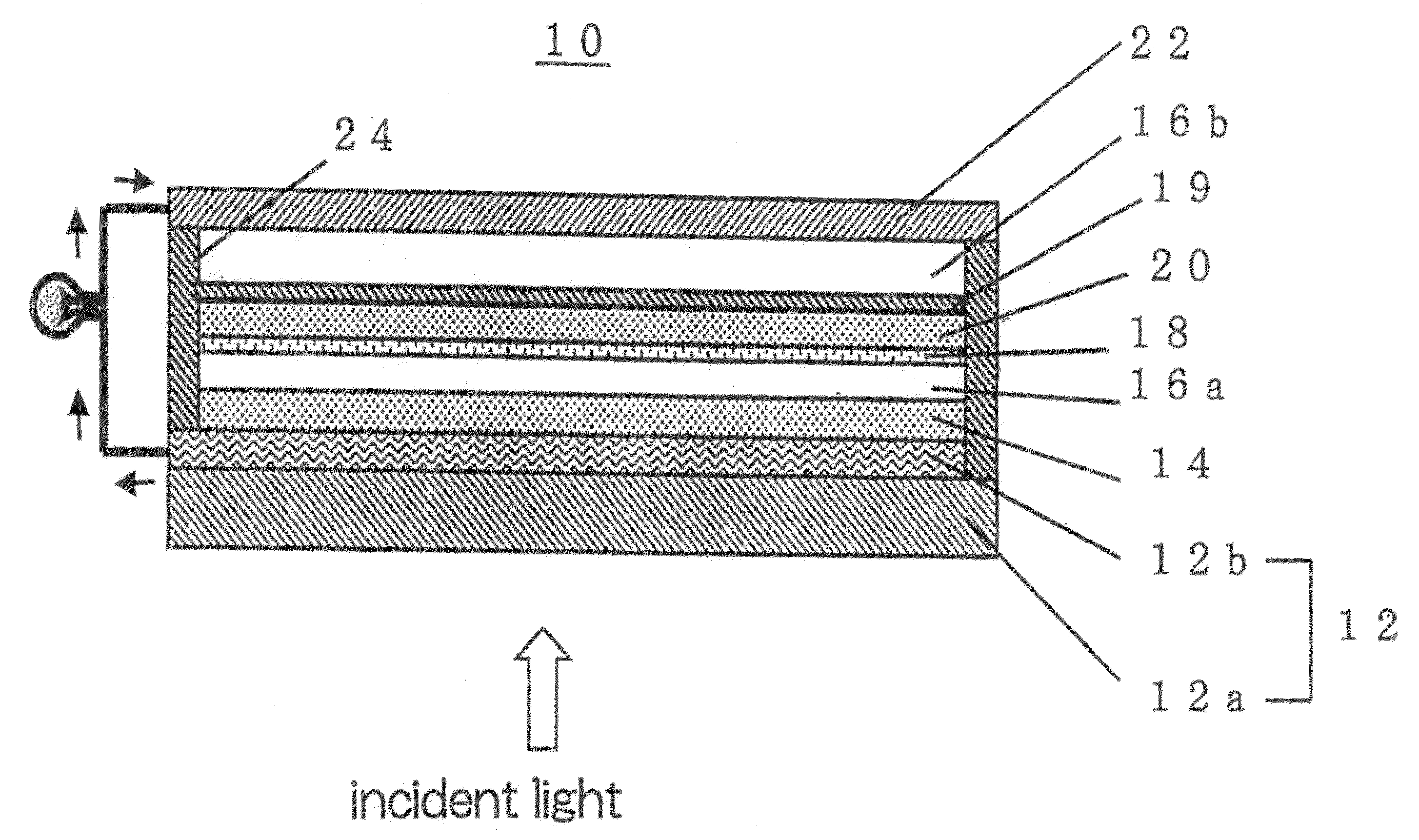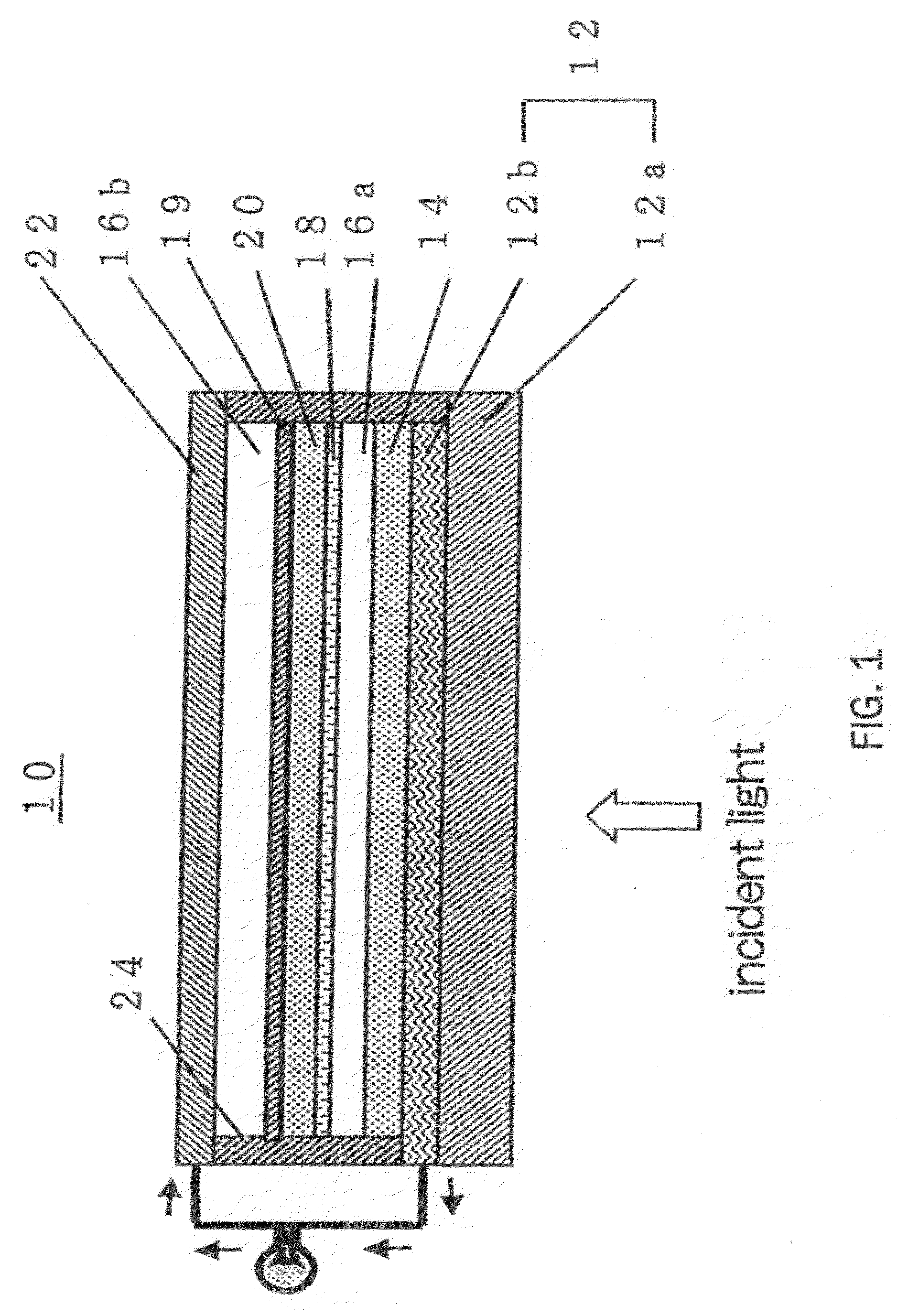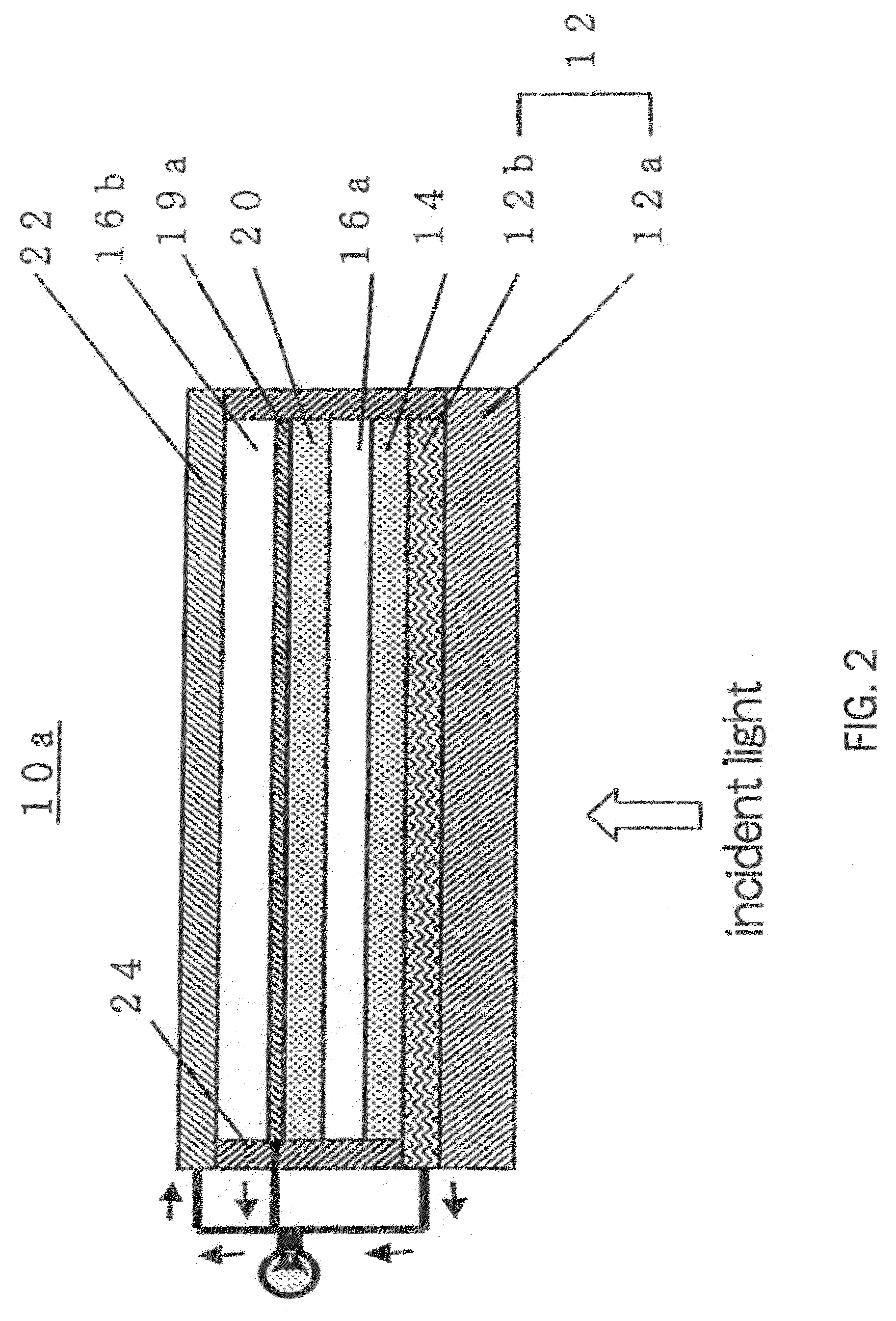Dye-sensitized solar cell
a solar cell and dye sensitization technology, applied in the direction of electrolytic capacitors, sustainable manufacturing/processing, final product manufacturing, etc., can solve the problems of increasing the manufacturing cost of the cell, reducing the absorption efficiency, and not obtaining dye which is capable of highly efficient light absorption from 400 nm to a wavelength of near-infrared or longer wavelength, etc., to achieve excellent light absorption efficiency and reduce the manufacturing cost of the dye sensitized solar cell.
- Summary
- Abstract
- Description
- Claims
- Application Information
AI Technical Summary
Benefits of technology
Problems solved by technology
Method used
Image
Examples
example 1
Manufacturing Example 1 of Dye-Sensitized Solar Cell According to First Example of Present Embodiment
[0085]An FTO film (surface resistance: 10Ω / □) is formed on a transparent glass substrate. Further, a titania paste is applied on the FTO film and then dried at 450° C. for 30 minutes, so that a porous titania layer having a thickness of 2 μm is manufactured. The first electrode section is manufactured by making the first dye (Dye2) adsorbed in the porous titania layer. On the other hand, a titanium film is formed by sputtering titanium on a mesh stainless steel substrate (thickness: 25 μm) having a mesh of 20 μm diameter, and then a titanium film is further formed by an arc plasma method while introducing oxygen, so that a stainless steel mesh structure having a protected surface is manufactured. A titania paste is applied to the surface of one side of the mesh structure, and then dried at 450° C. for 30 minutes, so that a porous titania layer having a thickness of 2 μm is manufactur...
example 2
Manufacturing Example 2 of Dye-Sensitized Solar Cell According to First Example of Present Embodiment
[0086]An FTO film (surface resistance: 10Ω / μ) is formed on a transparent glass substrate. Further, a titania paste is applied on the FTO film, and then dried at 450° C. for 30 minutes, so that a porous titania layer having a thickness of 2 μm is manufactured. The first electrode section is manufactured by making the first dye adsorbed in the porous titania layer. On the other hand, a titanium film is formed by sputtering titanium on a mesh stainless steel substrate (thickness: 25 μm) having a mesh of 20 μm diameter, and then a titanium film is further formed by an arc plasma method while introducing oxygen, so that a stainless steel mesh structure having a protected surface is manufactured. A titania paste is applied to the surface of one side of the mesh structure, and then dried at 450° C. for 30 minutes, so that a porous titania layer having a thickness of 2 μm is manufactured. Th...
PUM
 Login to View More
Login to View More Abstract
Description
Claims
Application Information
 Login to View More
Login to View More - R&D
- Intellectual Property
- Life Sciences
- Materials
- Tech Scout
- Unparalleled Data Quality
- Higher Quality Content
- 60% Fewer Hallucinations
Browse by: Latest US Patents, China's latest patents, Technical Efficacy Thesaurus, Application Domain, Technology Topic, Popular Technical Reports.
© 2025 PatSnap. All rights reserved.Legal|Privacy policy|Modern Slavery Act Transparency Statement|Sitemap|About US| Contact US: help@patsnap.com



